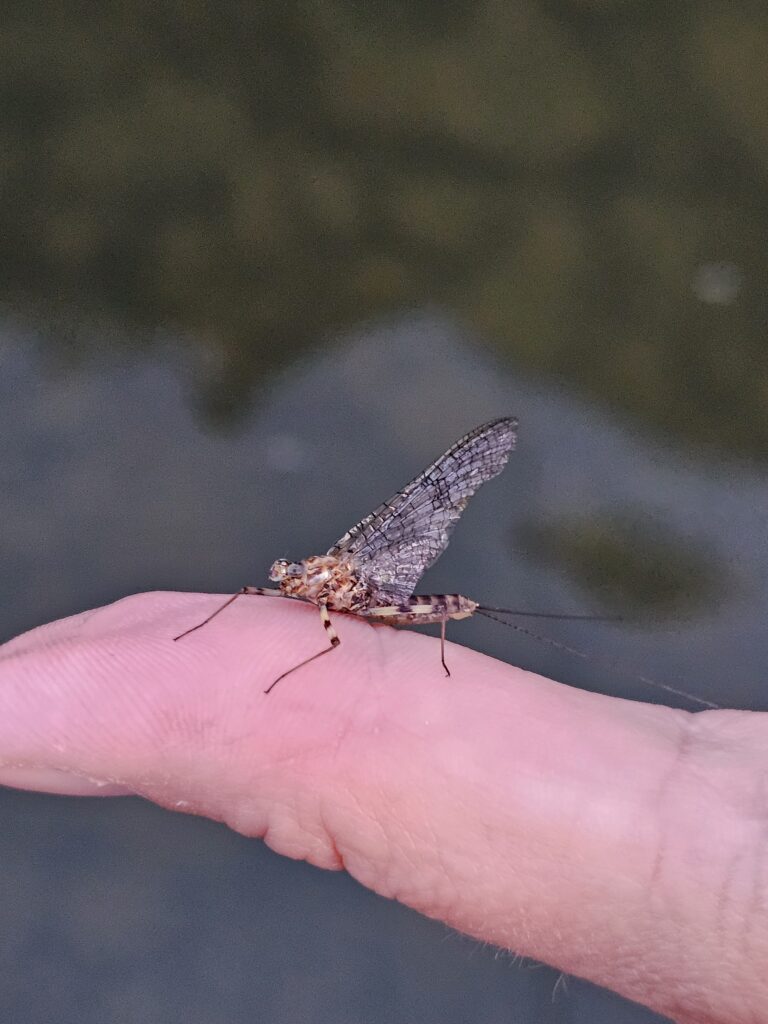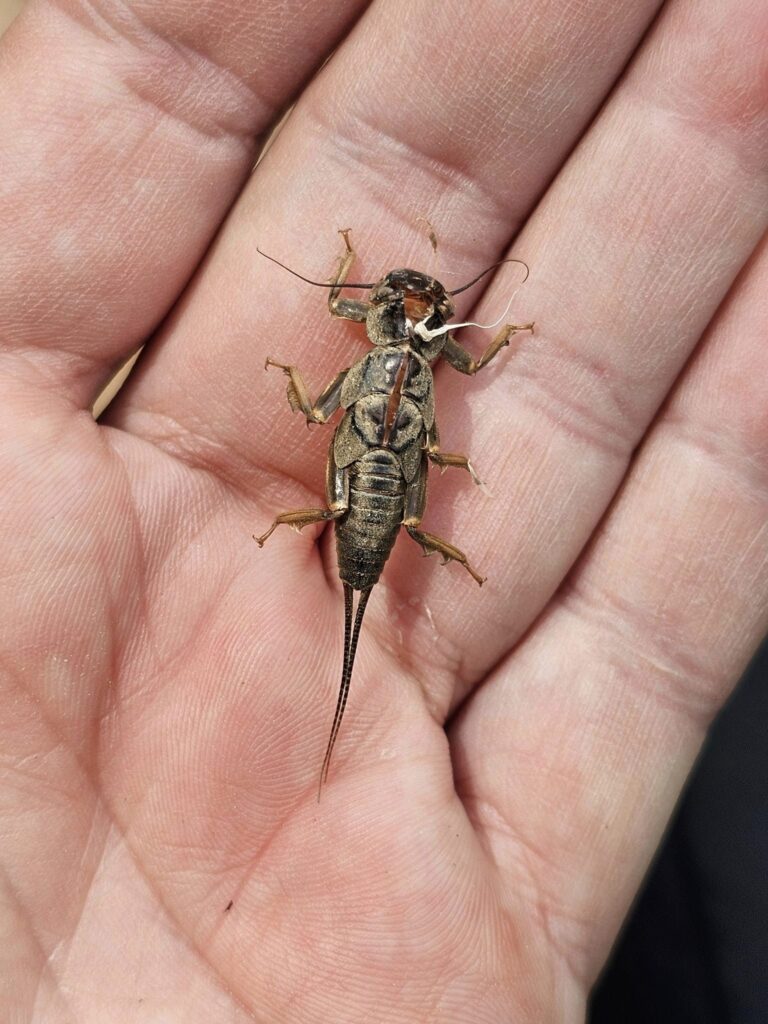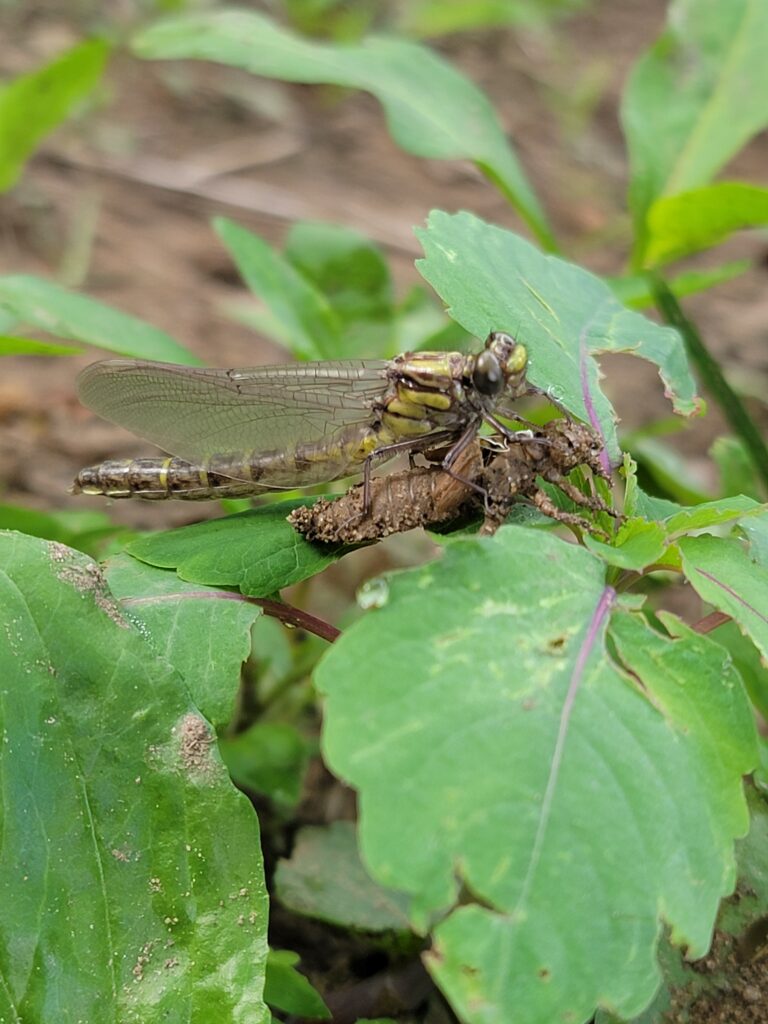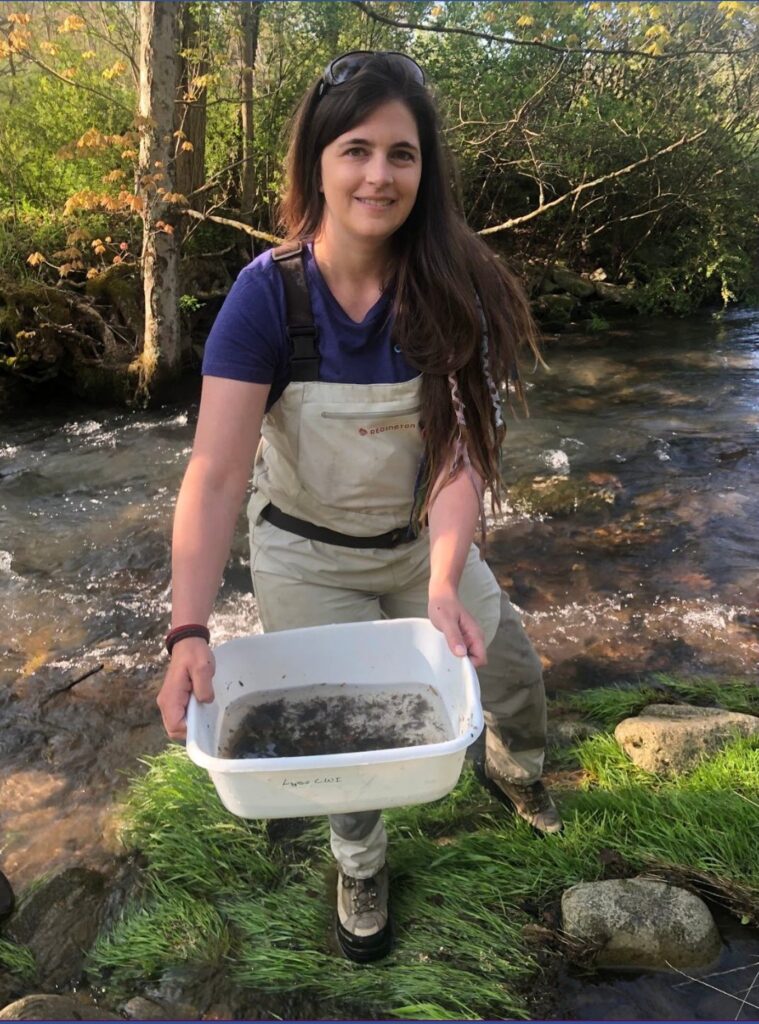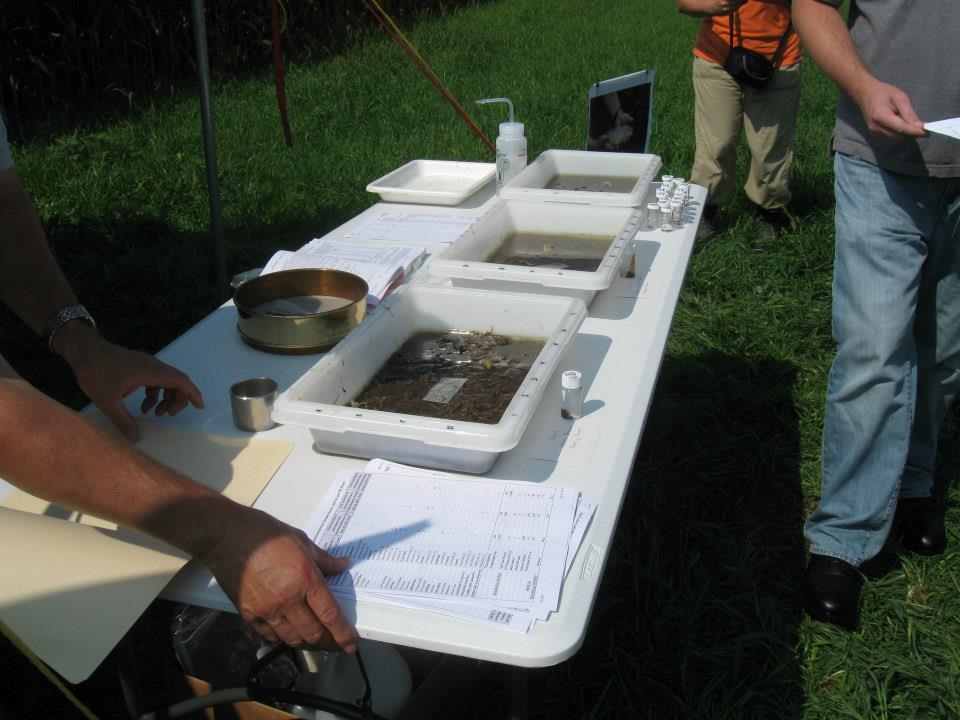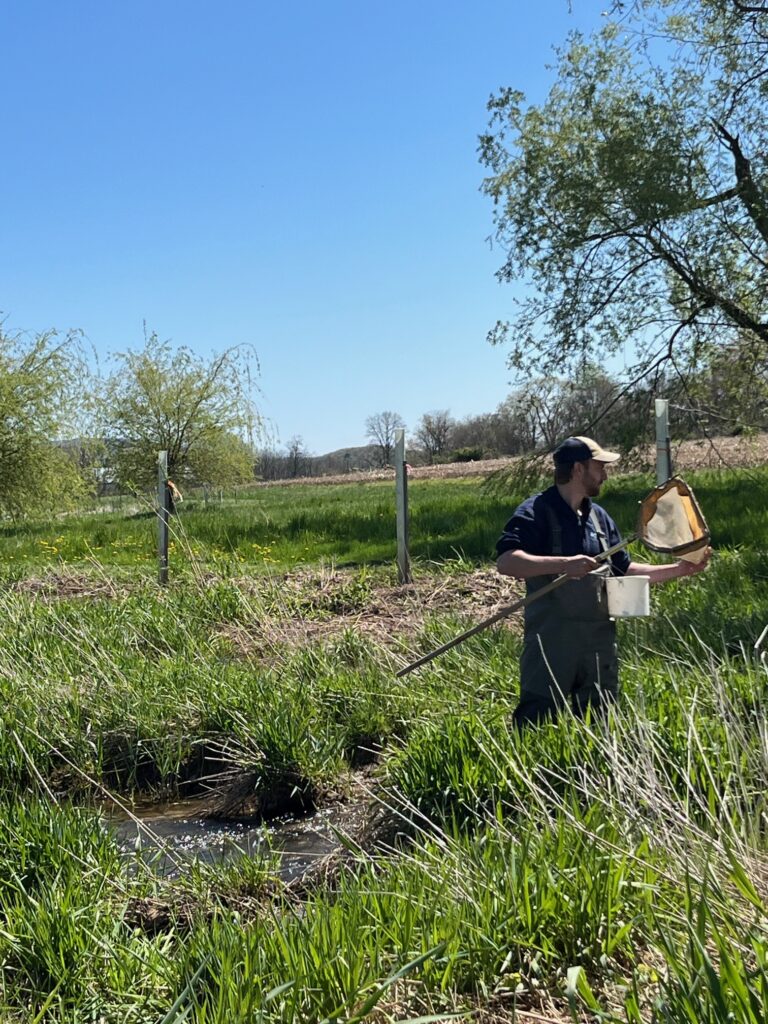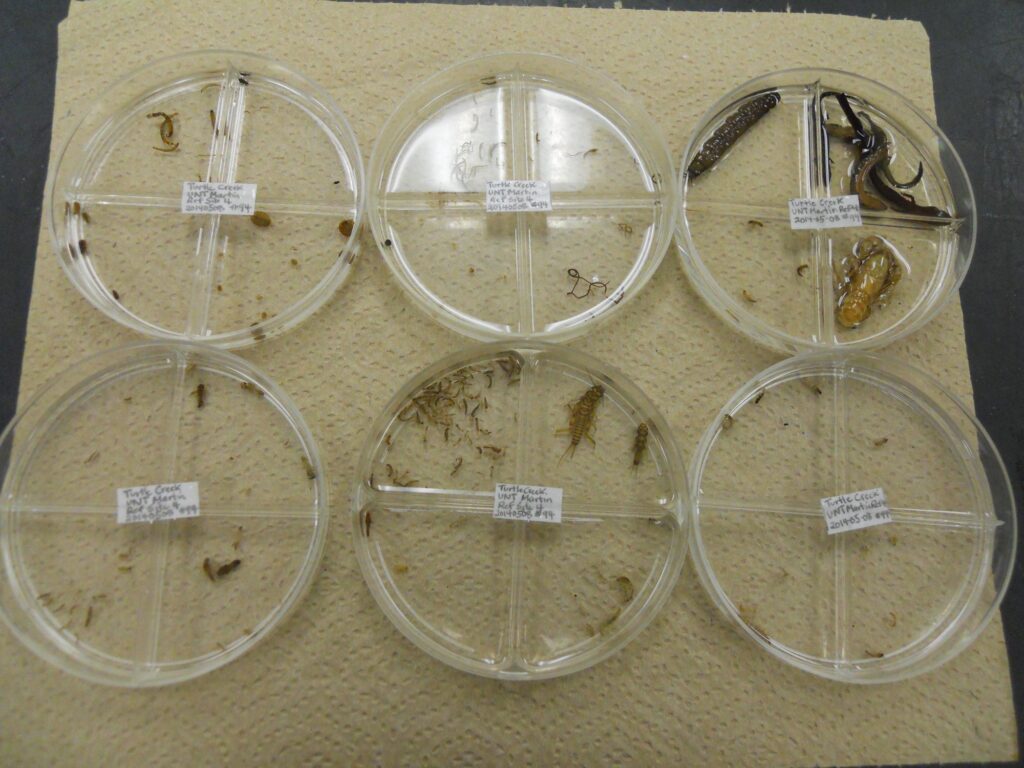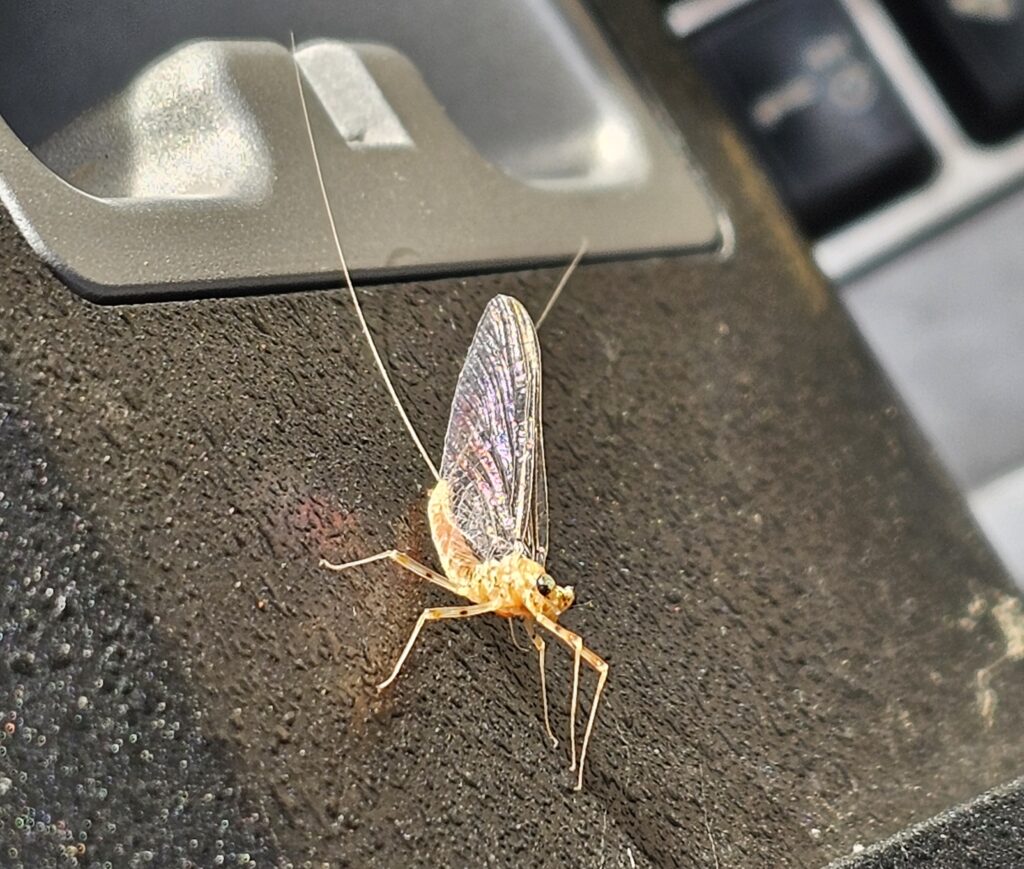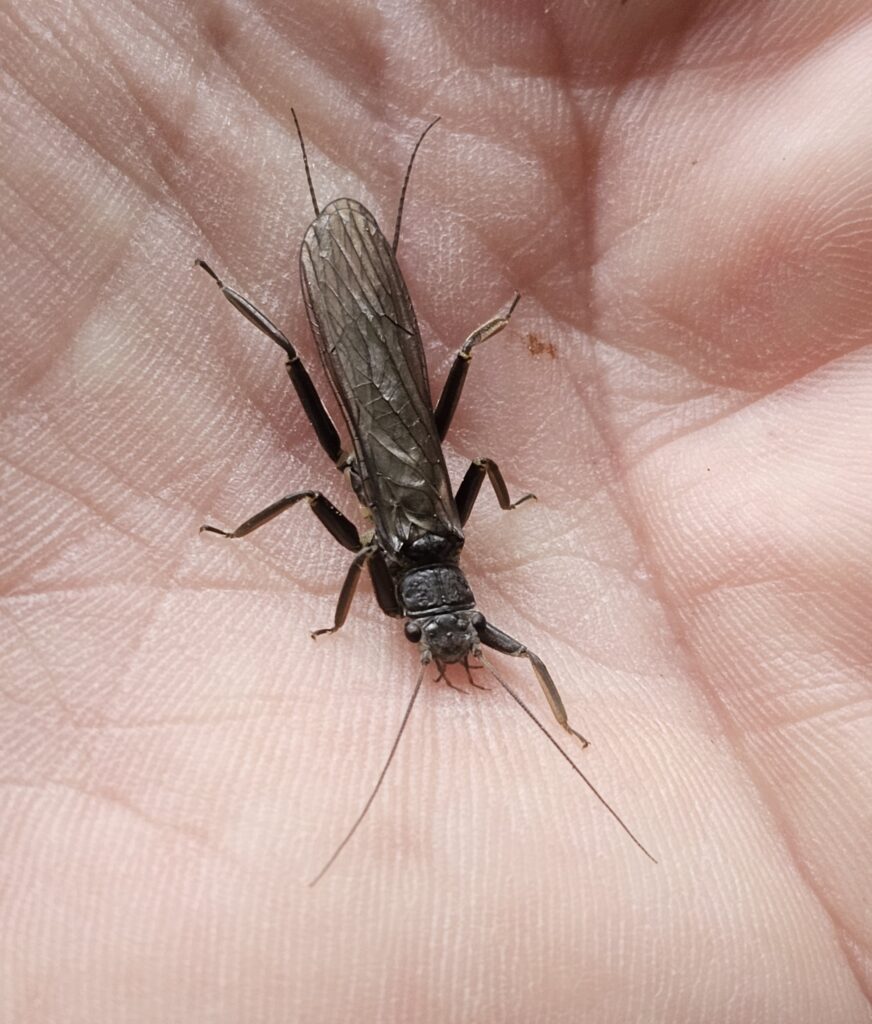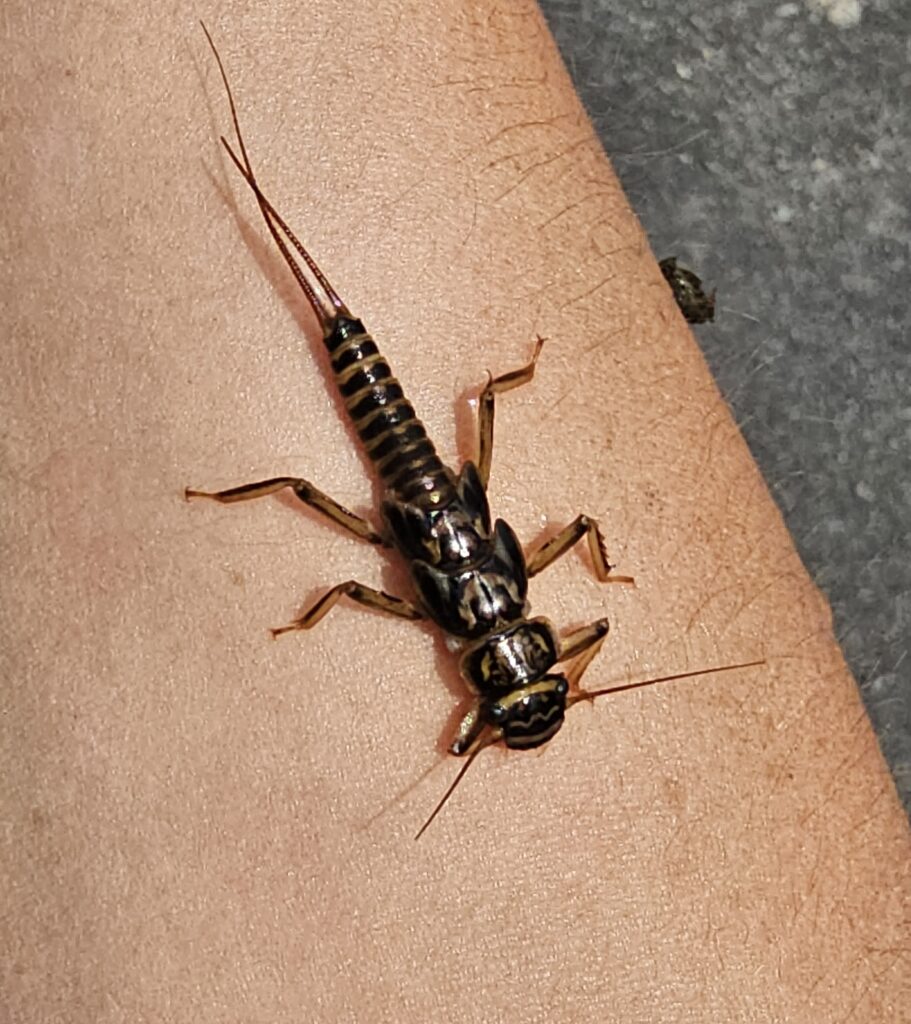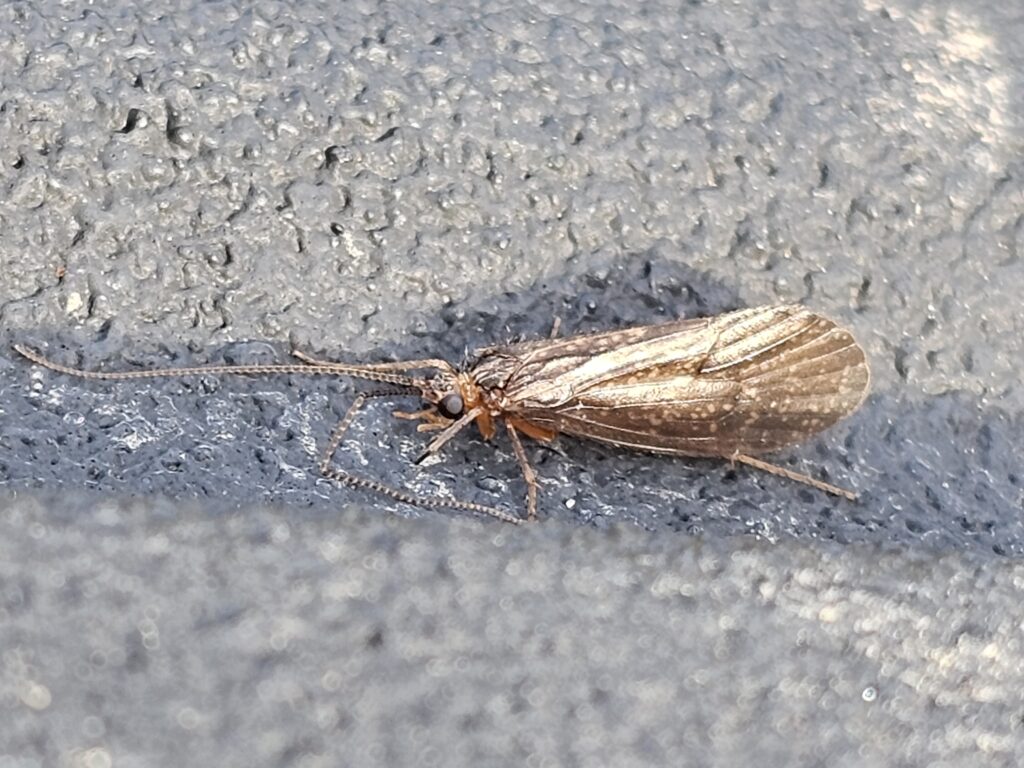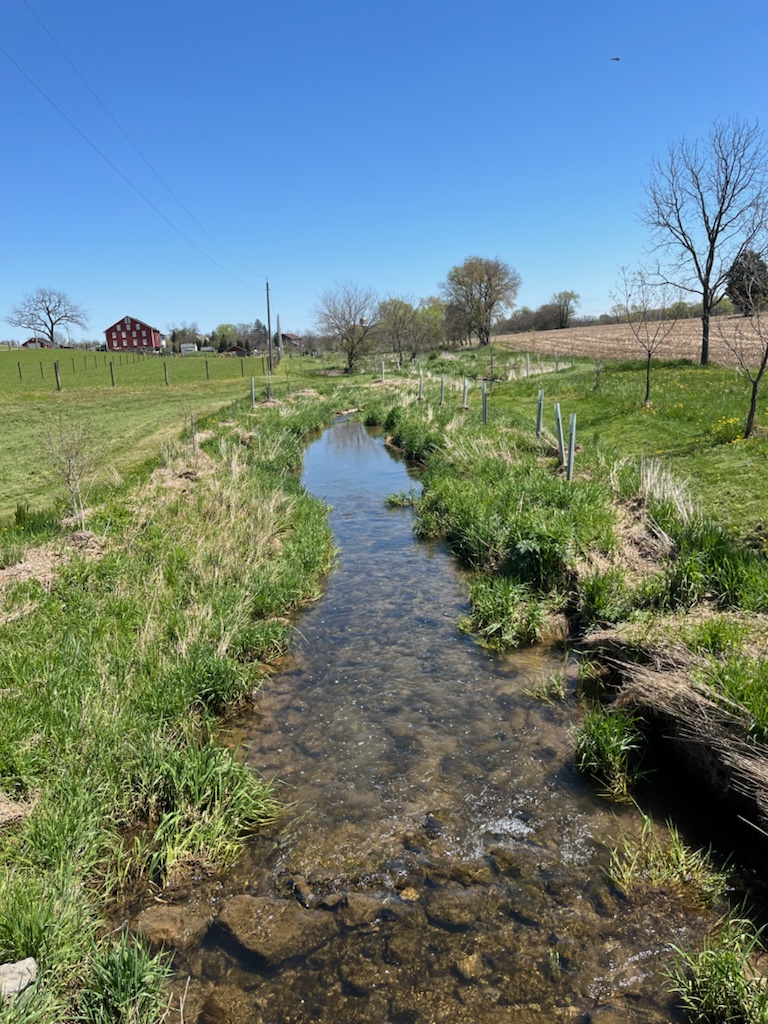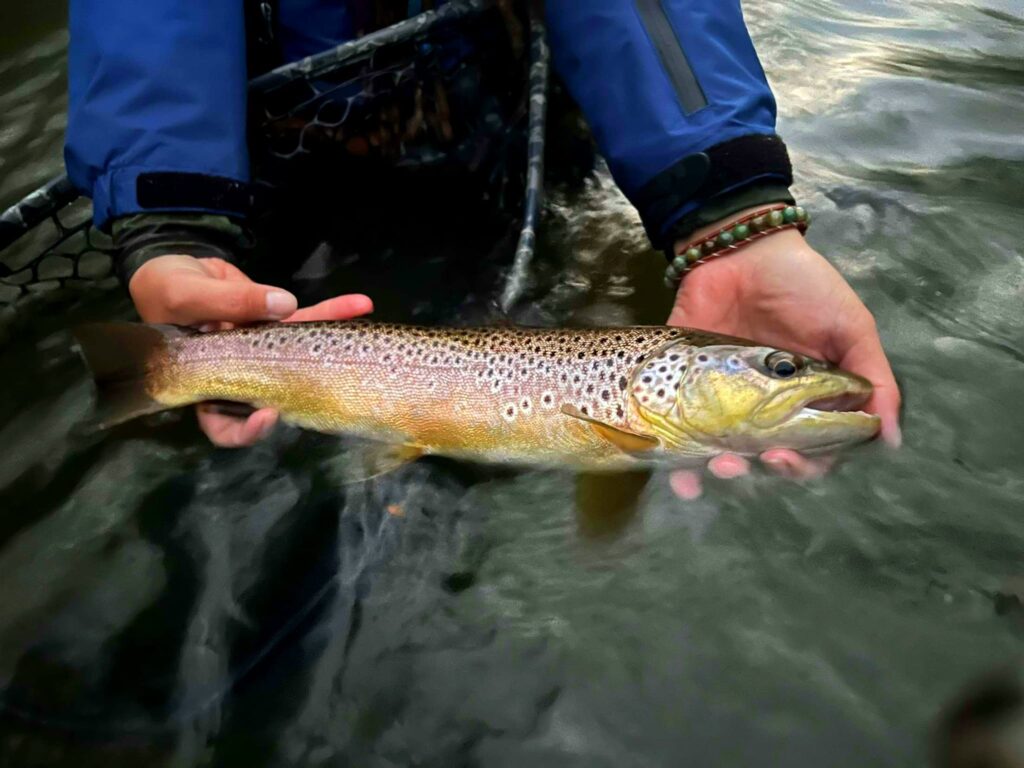Multiple organizations came together with Blossburg Borough for a project to stabilize approximately 300 feet of riverbank along the Tioga River in Blossburg’s Island Park.
If you look at the riverbank in the Park you can see the riverbank has been eroding for some time. The roots of the trees at the edge of the Tioga River are exposed and the trees are getting closer and closer to being undermined.
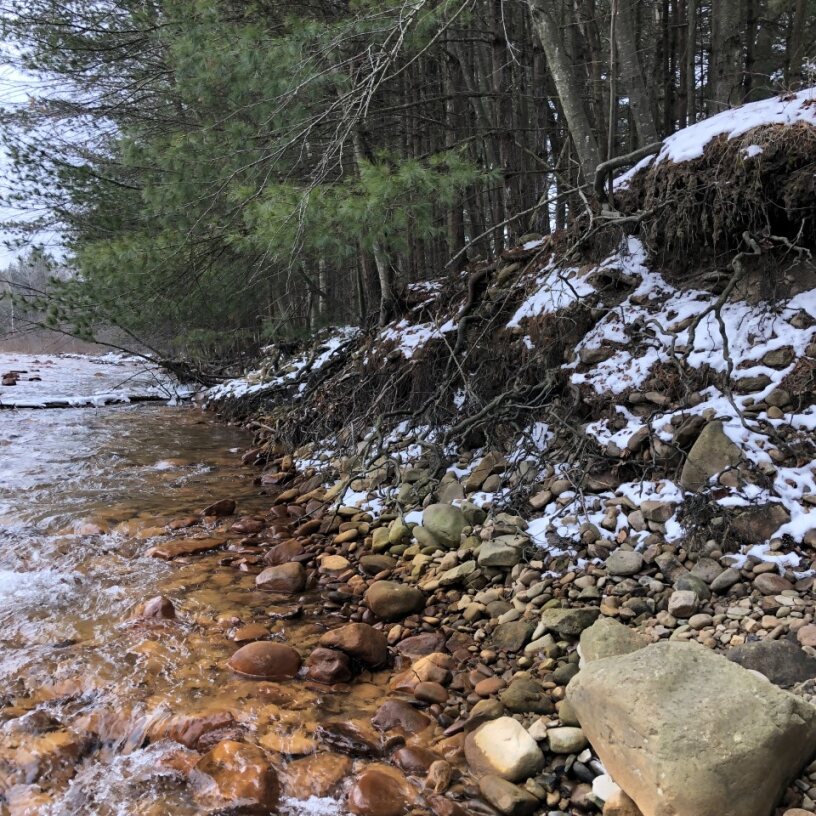
While the Park sits on the banks of the Tioga River there isn’t a lot of safe, easy access to the River itself. The banks are steep and there’s a drop from the top of the bank to the edge of the River.
Some people may be wondering why people would want access to the Tioga River since it’s currently impaired by Abandoned Mine Drainage (AMD).
The Susquehanna River Basin Commission and Pennsylvania Department of Environmental Protection are designing an active treatment plant to address the abandoned mine drainage in the Tioga River Watershed.
Within the next couple of years the active treatment plant will be up and running and the Tioga River will be flowing with clean water.
Biologists involved with the project expect there to be fish in the Tioga River within a year of the active treatment plant starting operations. This is possible because not all the tributaries to the Tioga River have AMD impacts. There are several trout streams that flow into the Tioga River.
Based on how other Pennsylvania rivers and streams responded to treatment, biologists involved with the project feel fish, including trout, will begin to move from the tributaries they are in now to the Tioga River. At first, they may not spend a lot of time in the River, but as aquatic habitat improves and their food sources can establish, the fish will spend more time in the River.
This project in Island Park is an effort to not only reduce sediment, but to also improve access for anglers, and create fish habitat for the “visiting” fish by using mud sills, log vanes and deflectors.
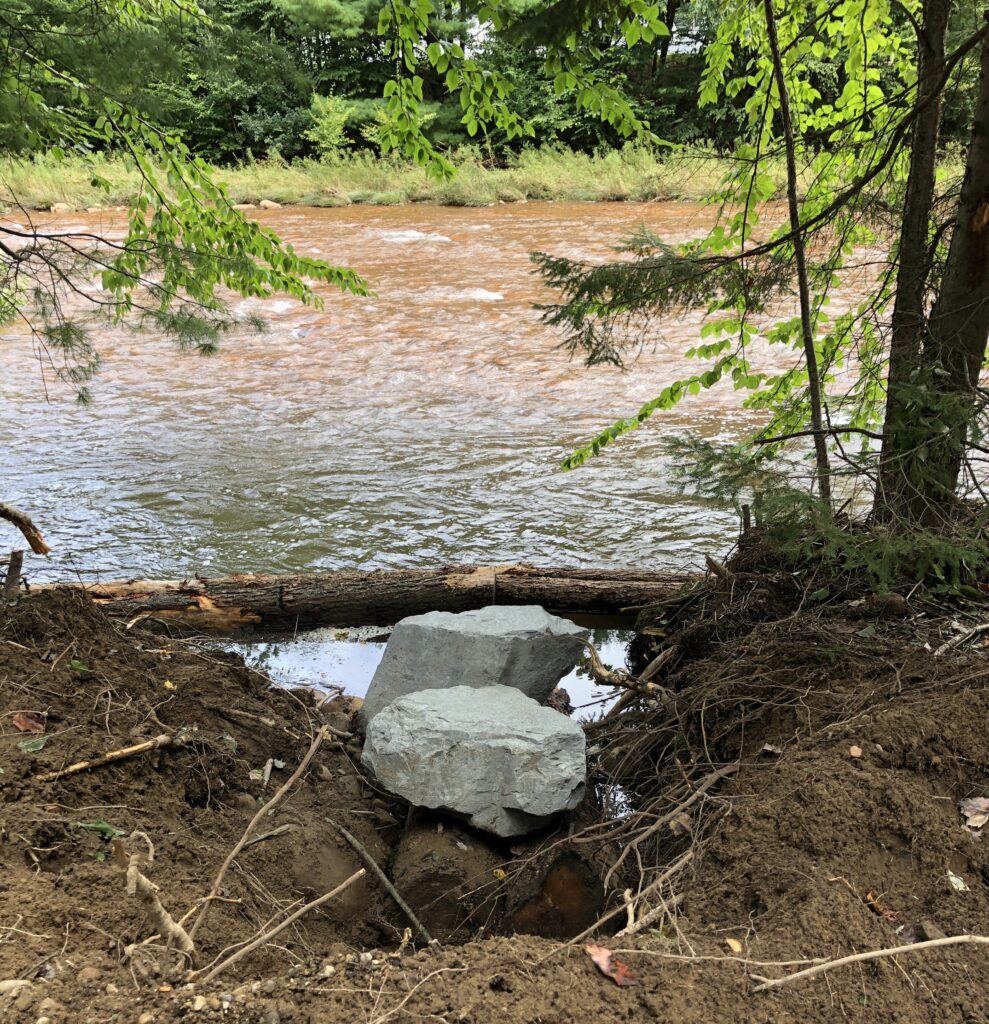
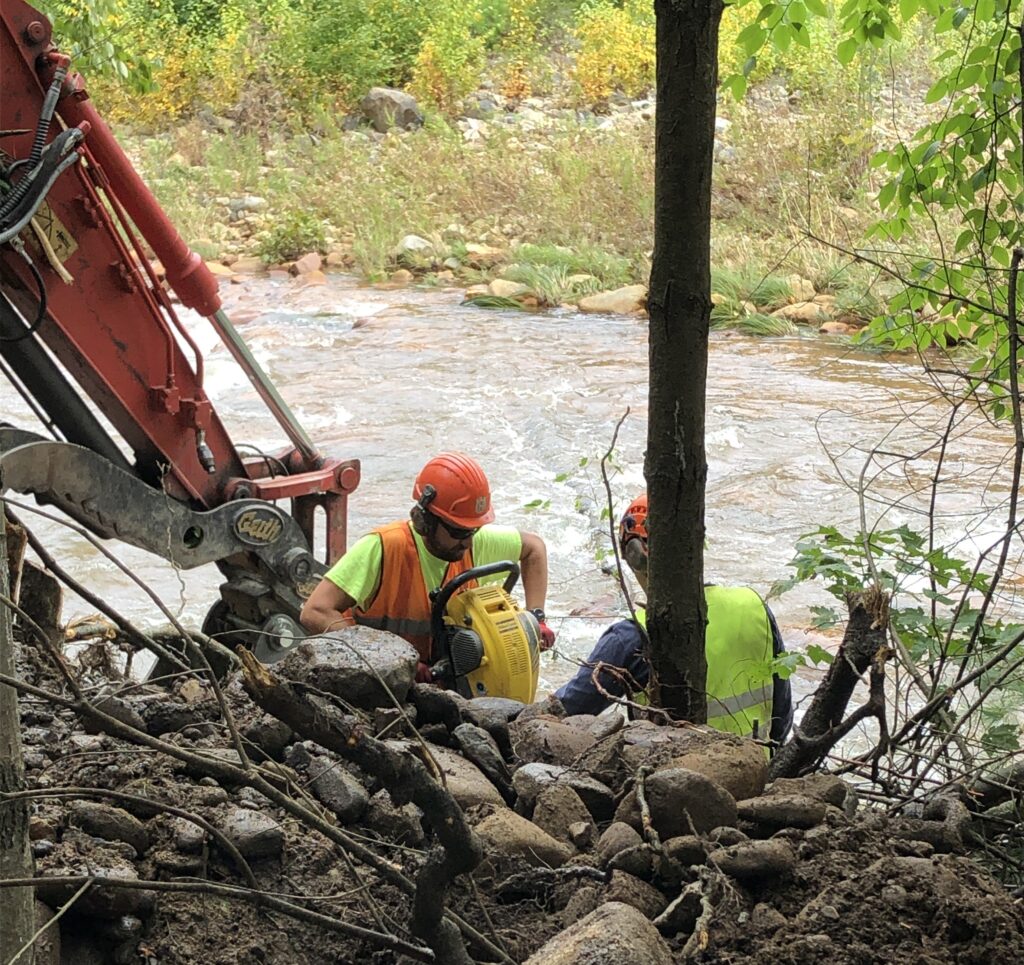
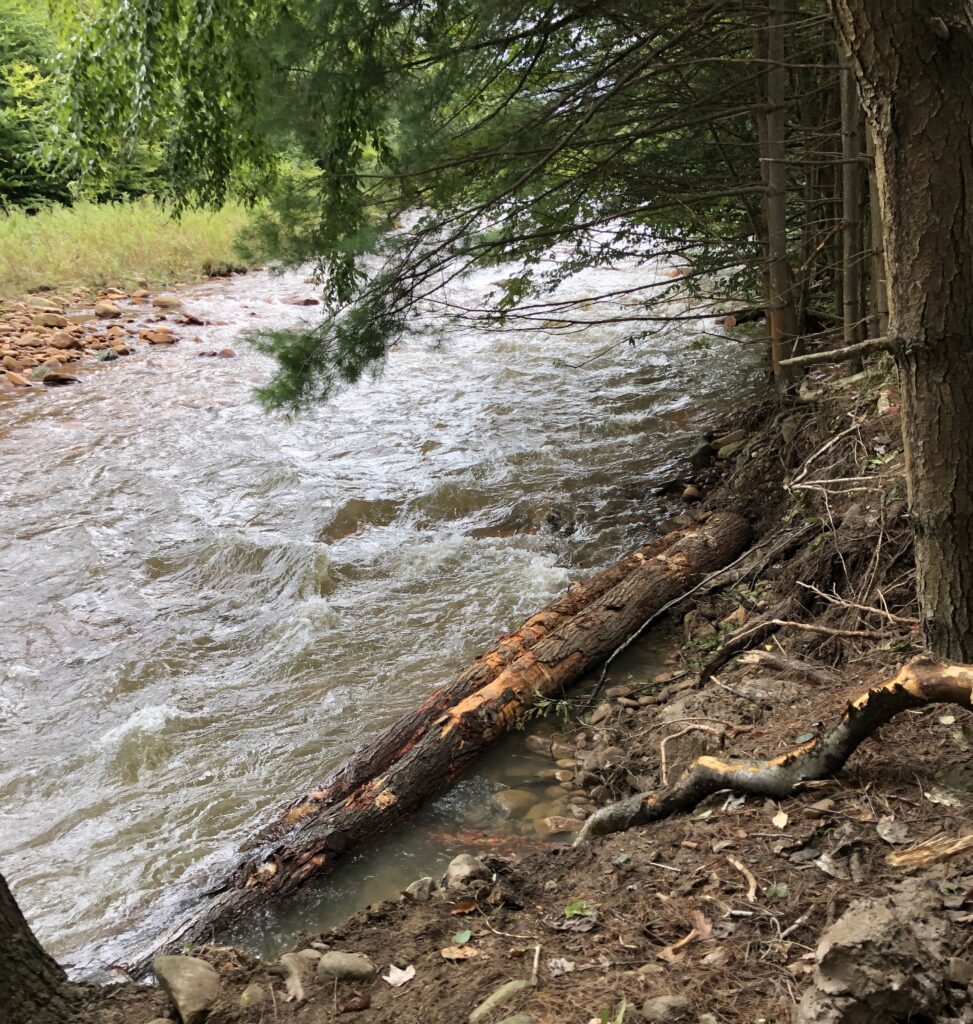
Log and Rock Structures Stabilize and Create Habitat
Staff from Trout Unlimited (TU) and the Tioga County Conservation District evaluated the site for potential stabilization and fish habitat in November 2022. During the site visit the group determined that Pennsylvania Fish and Boat Commission approved fish habitat enhancement structures could be used to stabilize the eroding riverbanks while also improving habitat for fish and other aquatic life.
The structures do this as the water flowing downstream comes into contact with the logs used in building the structures. The logs are a hard edge and redirect the flow back towards the center of the river.
“The structures will reduce toe erosion along the banks and maintain the thalweg in the center of the channel.”
Phil Thomas, Stream Restoration Specialist with TU’s Pennsylvania Coldwater Habitat Restoration Program.
The structures are built out of logs and rock. The logs are held in place with rebar and rock provides weight to hold the logs in place, and also provides a surface to regrade to create a sloped riverbank. A sloped riverbank allows higher than normal flows to move up the riverbank and spread out. This will slow down the water which further reduces erosion at the site and downstream.
“We usually are using hemlock or larch logs. People are often concerned the logs will rot away. As long as part of the log is in water, the whole log stays wet. Logs are like sponges that way. A wet log will last longer. The water pushes out the oxygen in the log. Without oxygen it doesn’t decay as quickly.”
Tyler Upham, the Tioga County Conservation District’s Watershed Specialist
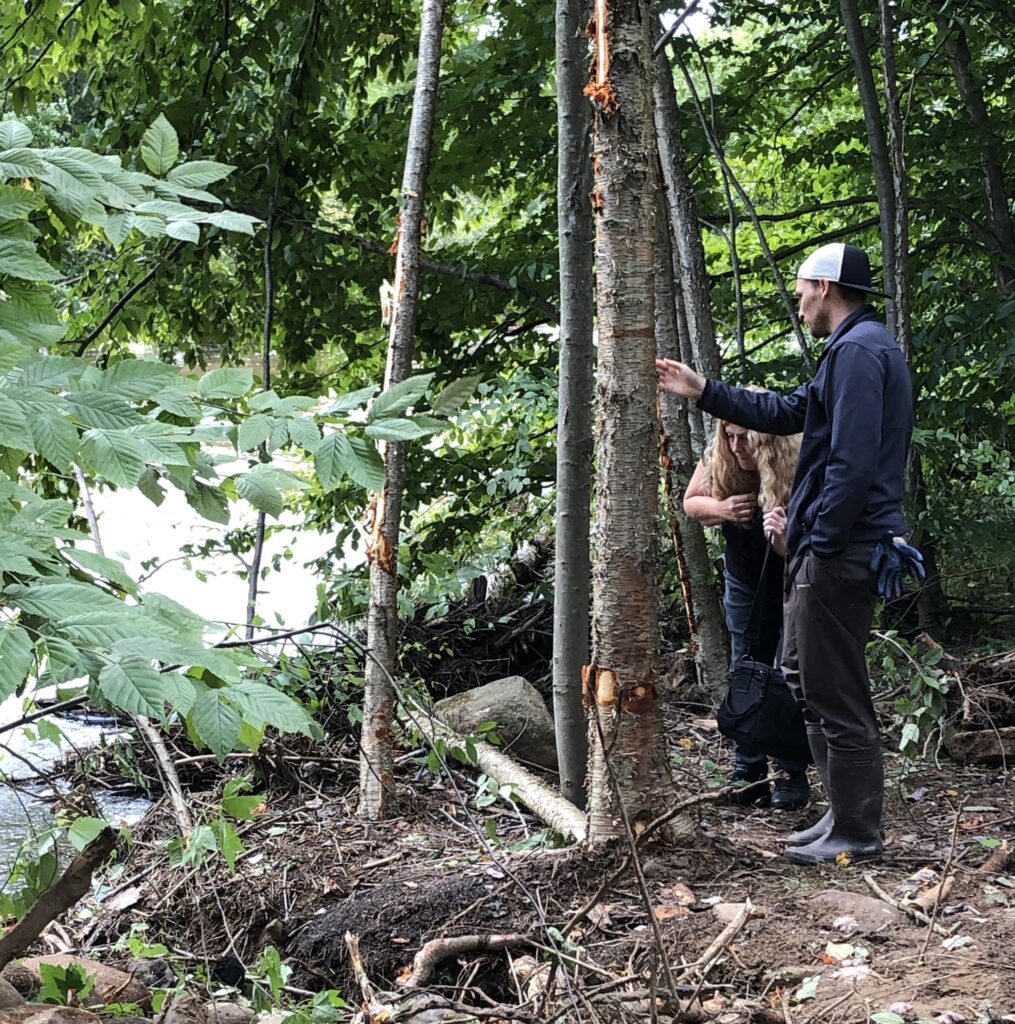
Island Park holds the high school football stadium, tennis courts (painted with pickleball lines), Little League Baseball fields, softball fields, the pool and splash pad, playground, skate park, and a walking path. This community park is used for Friday night football, the annual Coal Festival, and daily walks. This project will help add to the list of recreation possible in the Park by creating habitat for fish, and better access for anglers.
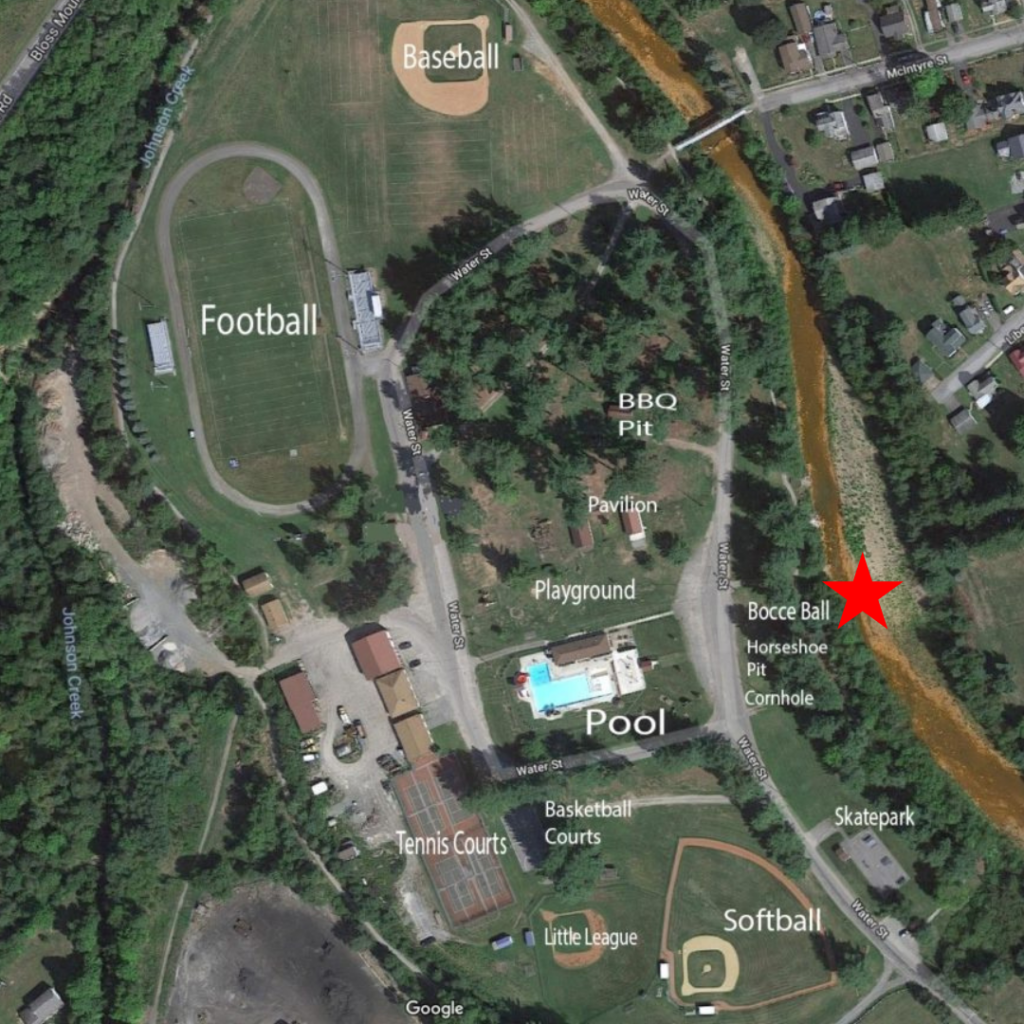
“NPC became involved in the Tioga River Restoration when a property critical for treatment was listed for sale. As we learned more about the project we realized the recreational potential for the Tioga River and the need to begin to think about public recreation access. Once there are fish in the River, people will want to fish the River. If there are public access points that make it easy for anglers to get to the River it helps everyone. Blossburg Borough has been a great partner and open to the idea of improving their Park and adding recreation.”
Reneé Carey, Executive Director with the Northcentral Pennsylvania Conservancy (NPC)
Project Funding and Partners
The project is funded in part by donations from American Legion Post #167, Hillside Rod & Gun Club, Tioga County Concerned Citizens Committee, Tioga County Woodland Owners Association, Tiadaghton Chapter of Trout Unlimited, William B. Wilson Post 572 of the American Legion, the Williamson Road Foundation, and several individuals.
Additionally, the Northcentral Pennsylvania Conservancy received a grant from BHE GT&S through a program administered by the Western Pennsylvania Conservancy.
Tioga County Concerned Citizens Committee (T4C) lead the effort to reach out to other local organizations for support.
“We’ve been working a long time on getting the Tioga River cleaned up, but it’s not just about clean water. It’s also about having opportunities for the communities along the River to have access and enjoy fishing and swimming once the River is cleaned up. This riverbank stabilization project is a great example of how a lot of partners can do a small part that makes a big project possible.”
Charlie Andrews, president of T4C
Blossburg Borough Council member Jill Nickerson looks forward to the future opportunities the project will bring for the community.
“The river restoration project is a shining example of what we can achieve through collective effort. By restoring the natural beauty and health of the river, we are creating additional recreational opportunities at Island Park that will benefit everyone in our surrounding communities. Whether you love to fish, kayak, or walk along the riverfront, this project will have a positive impact that will be felt for generations to come.”
Jill Nickerson, Blossburg Borough Council member
About the partners:
- The landowner is Blossburg Borough
Project comments related to the Park can be shared with George Lloyd.
- Trout Unlimited
Phil Thomas with TU evaluated the site, developed the design, and is implementing construction.
- Tioga County Conservation District
Tyler Upham with the District assisted in evaluating the site. He also coordinated the contractor and materials deliveries for the project - Tioga County Concerned Citizens Committee
Charlie and Joyce Andrews coordinated communication with other groups in the area to help raise the funding necessary for the riverbank stabilization project. - Northcentral Pennsylvania Conservancy
NPC handled various types of paperwork and permitting. Additionally NPC served as the “banker” for the donations from the other community groups and applied for funds through a grant program.
Financial support for this project is provided by BHE GT&S which is dedicated to the economic, physical and social health of the communities served by BHE GT&S companies. This grant program was administered by the Western Pennsylvania Conservancy in commitment to its core mission of conserving Pennsylvania’s diverse ecosystems through science-based strategy, leadership, and collaboration.
Other Information on the Tioga River Restoration
The Susquehanna River Basin Commission’s Tioga River Restoration’s Mine Drainage program is a great place to start.
Stacey Hanrahan, Communications and Outreach Specialist at shanrahan@srbc.gov, (717) 238-0423 ext. 1314 for additional details.
From the NPC Blog:
March 2024: Town Talks: A Key Component of Conservation
January 2023: Survey Ribbons Mark Progress
November 2022: Tioga River Visit Looks at Erosion and Talks About Fish
July 2022: Municipal Officials Walk Through the First Draft of the Tioga River Mine Drainage Treatment System
May 2022: Blossburg Property Purchased – Tioga River Cleanup Moves One Step Ahead


